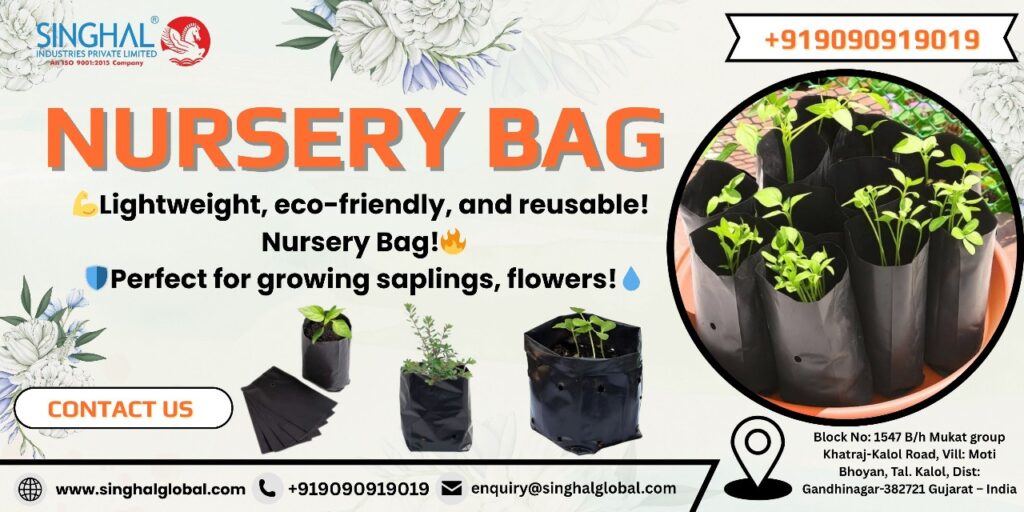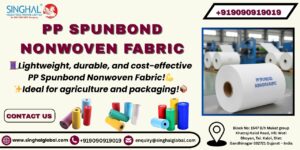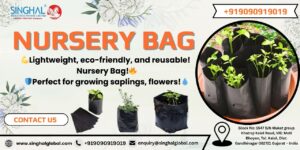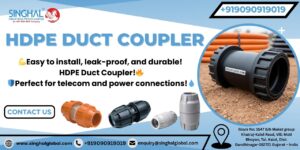Bags for nursery bags – which are incredibly flexible, humble, and often a bit overlooked – have become the game changers for CPG brands as well as nursery buyers in India in addition to other countries. It doesn’t matter if you’re launching organic herbs into your line or running a sprawling horticulture garden; these bags are small and provide enormous yields. For consumers in CPG (consumer packaged products) or agriculture, knowing the evolution, advantages, and market-based mechanics of nursery bags can be the difference between growth and stagnation.
The New Backbone of Horticulture & CPG Packaging
In the ever-changing agricultural landscape, smart nursery bag selection has become the basis for everything from seedling production to direct-to-consumer marketing. The Nursery bag in India isn’t just a sack of black poly to grow saplings. It’s about the reliability of brands and differentiation of products, even delivering the environmental commitments of eco-conscious consumers. CPG brands that rely on organic ingredients, gardening kits for DIY, or even potted plants to sell on retail shelves require robust and attractive packaging. The modern nursery bag manufacturers provide more than just protection for your products: their designs are intended to support branding, shelf appeal, and longevity of freshness.
Why Nursery Bags Are Essential for Nursery Buyers
Nursery managers are faced with a marathon, not an easy sprint, when they plant robust seedlings. Traditional planters and pots that are rigid restrict growth, create root circling, and cut the profits of businesses due to high transportation costs. Nursery bags of the present, in contrast:
- Help to speed up root development. Flexible walls promote healthy branching instead of root binding.
- Increase space efficiency by using bags. Bags can be stacked compactly and let growers make the most of all available space.
- Allow for easy transplanting: seedlings taken from nursery bags are less stressed after being moved and have a better post-plant survival rate.
- Offer cost efficiency: Nursery bag prices are much less per unit than the majority of pots.
- Let you manage your environment in a variety of ways. Bags with different sizes ensure that each species has the ideal habitat.
A nursery manager has shared, “I switched my entire operation to nursery bags. Now I move, sell, and transplant with far fewer headaches.”
CPG Opportunities: Packaging, Branding, and Direct-to-Consumer Trends
For CPG brands, nursery bags are now unlocked for new products. Are you looking to ship “grow-your-own” herb kits with seedlings? Packing veggies or decorative plants for supermarkets? The nursery bags provide light, durable, and printable surfaces ideal for branding QR codes, brand logos, or care instructions. Many consumers are moving to organic and natural food, and wellness CPG brands add emotional touches through nursery bags—”From the seed to the kitchen, we care for our health!” The rise of customized packaging, limited-edition bag colors, and eco-label endorsements are all possible due to the flexible nature of bag production.
Innovations and Market Contradictions
The trend for eco-friendly products is popular. Nonwovens, biodegradable bags for nursery, as well as jute and coir models are getting more attention; however, the nursery bag cost can range from 20 to 50 percent higher than traditional black plastic bags. Many buyers are happy about this change, but some are concerned about more expensive upfront costs. “I love eco bags,” says an urban gardener, “but when running a mass nursery, every rupee counts.” The conflict between cost and sustainability has led to constant design and innovation in the Nursery Bag manufacture and is pushing manufacturers to mix recycled materials with renewable resources and advanced printing features.
From Retail to Rural Fields
A CPG startup that sells potted basil and mint for in-store sales disclosed: “Our shift to branded nursery bags enabled us to show care tips, recipes, and batch tracking. Customers loved it, retailers reduced spoilage, and our return rates dropped.” A nursery in Karnataka was able to grow between 10,000 to 40,000 seeds each season by simply changing to bags with strong construction, which kept the roots healthy and cost-effective. “We used to lose dozens of plants to waterlogging and poor aeration,” the manager told me. “Now, drainage holes and breathable sides keep every batch thriving.”
What to Look for in Nursery Bags
Buyers who are smart and CPG brands should consider:
- Drainage: bags of good quality have holes to allow root aeration as well as water management.
- UV resistance and thickness: the balance between cost-per-bag and the protection of plants.
- Printability: custom branding batches, batch codes, and care instructions.
- Conformity: plants that are imported or exported often require certified nursery bags.
- Pricing for bulk items: negotiating nursery bag prices in large amounts is crucial.
A sourcing manager from an established national brand of home gardens told me, “We partner with top Nursery Bag manufacture to get the same bags for our kits of plants and also to customize size for every variety. This is the reason we keep our retail partners content.”
Currents and Countercurrents: Buyer Version
The desire to have environmentally friendly bags usually comes in conflict with the financial aspect of budgets. Promoting green products through gardens have to balance the price and the consumer demand, and production nurseries have to use hard poly bags to withhold in the industry. The most effective solution? Mix bags, such as eco for retail and standard for large-scale planters. Another dilemma: buyers desire customization (size and branding, as well as printing); however, large-scale runs reduce costs. Bulk purchasing is the main factor, and relationships with the top nursery bag manufacturers in India ensure the highest quality and reliability.
Conclusion
In every nursery bag lies an idyllic green space with lush terraces, rooftop farms, and even the humble coriander pot that is tucked away in an urban window. For CPG brands, nursery bags make a route for direct-to-consumer interactions with story-driven marketing as well as expanding their portfolio. For buyers of nursery products, choosing a well-chosen bag means flourishing crops, happy customers, and repeat business each and every season of planting. In the final analysis, it’s more than just about what you’ll pack your trees or plants in; it’s about encouraging growth, supporting brands, and helping to fuel India’s future agricultural potential, just one tiny bag at a time.
Frequently Asked Questions (FAQs)
Q1. Do the nursery bags have drain holes?
Yes, most of the good companies in India and worldwide have nursery bags that have holes or drainage holes. The holes enable water to escape excessively and make sure that air is circulated to roots, thus health of the plant is promoted.
Q2. Should nursery bags be used to store herbs and vegetables?
Absolutely. Nursery bags are used in commercial nursery production and in retail sales directly, down to mint, through to peppers. They are so flexible that they can match fast cycle crops and delicate roots amongst others.
Q3. Do nursery bags enhance development of healthy roots?
They can! Existence of soft walls adds to the root branching and lessens root circling in such a way that plants do well in bags and upon planting- required to produce healthy production.
Q4. Are green alternatives more costly?
Usually, yes. Nursery Coir, biodegradable and nonwoven nursery bags cost more per bag compared to standard poly bags, but are less damaging and offer superior branding, particularly in the retail and export market.
Q5. Who is the largest nursery bags manufacturers?
Some of the key players are Singhal Industries, VJ Smart Material and Krupex. They are all distributed in large quantities, customized in size and delivered fast to bulk buyers in the nursery and CPG packaging industries.









